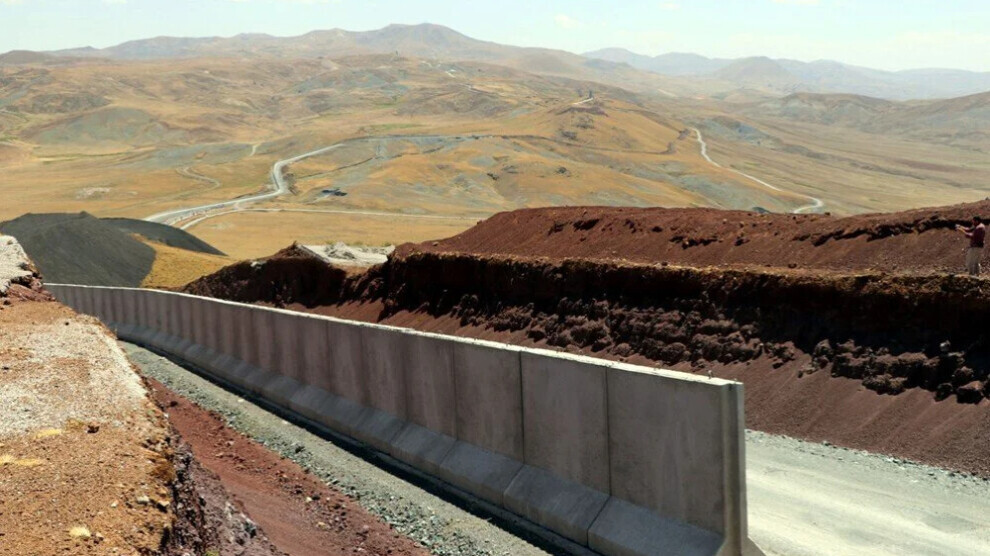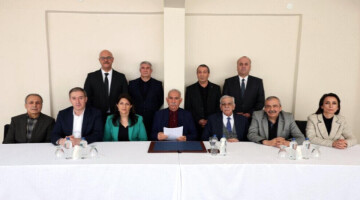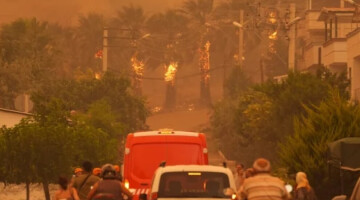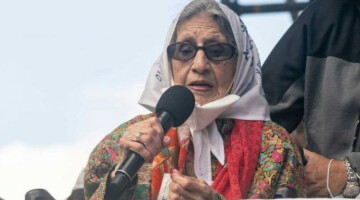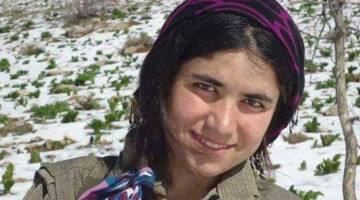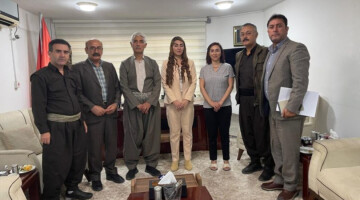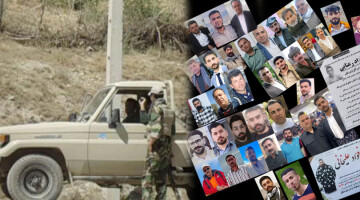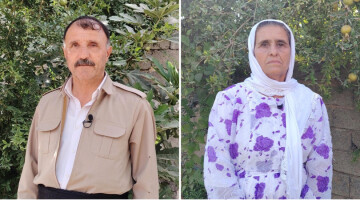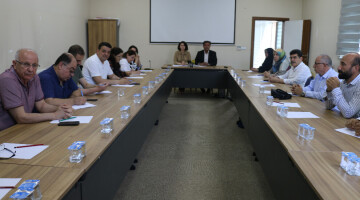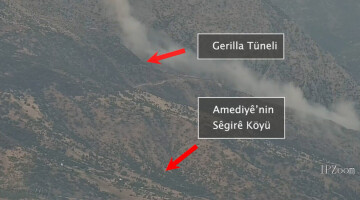The Turkish state is building a wall along its eastern border. Since 2018, the Turkish state has been building a huge bulwark along the 560-kilometre-long Turkish-Iranian border to prevent any uncontrolled border crossing. This wall separates the provinces and districts of Çaldıran-Van, Doğubeyazıt-Ağrı, Yüksekova-Hakkari in northern Kurdistan from eastern Kurdistan and is intended to break the connection between the parts of Kurdistan on Turkish and Iranian territory. So far, 185 kilometres of the wall have been completed. A three-metre high barbed wire is placed on the wall and trenches are dug around it.
The political project of the wall is clearly defined. The anti-Kurdish character of the bulwark is also shown by the fact that the border with Eastern Kurdistan (Iran) is completely walled in, while the 17-kilometre-long border strip with Azerbaijan, which is closely allied with the Erdoğan regime, remains open. Turkey maintains trade relations with the autonomous region of Nakhichevan via the Dilucu border crossing. However, the Kapıköy and Esendere border crossings on the border with Eastern Kurdistan have been closed for many years and trade is strictly regulated.
Speaking to ANF about the effects of this policy, the chair of the Çev-Der environmental association in Van, Ali Kalçık, said : "Walls are being built in the mountains of Kurdistan, roads are being built in the forests for patrol and dams are being built in the valleys to cut regions off from each other. The valleys are being cut off from water. The main aim is to completely cut off relations between the Kurds and destroy nature there. They are interrupting the flow of life. There is no court in Turkey to which we can appeal, no judge who would object. All our complaints so far have been unsuccessful. Our people and the public need to be much more attentive."
The borders that run through Kurdistan are artificial and were drawn between great powers. Turkey's eastern border largely runs along the eastern border of the Ottoman Empire, right through the middle of Kurdistan. While most of the borders through Kurdistan were only negotiated among the international powers in the Treaty of Lausanne or, before that, in the Sykes-Picot Agreement, this border was already established in the 1639 Treaty of Qasr-i Shirin after negotiations between the Ottoman Empire and the Safavid Empire, of course without involving the people of the region. Social networks remained in place, nomads migrated between the regions, and trade flourished between the villages on this side and the other side of the border. With the founding of the Republic of Turkey and the Turkification policy that accompanied it, the border began to become increasingly "hard". Especially from the 1990s onwards, the border strip was heavily fortified with military forts, and traffic between the regions became increasingly life-threatening. Finally, in recent years, it was almost only the load carriers, the kolbars, who dared to make their way over winding mountain paths. This often ended fatally, because both the Iranian border guards and the Turkish army repeatedly attacked the load carriers directly and killed them. Others fell into ravines and died. With the construction of the wall, entire regions, such as the plateau around Gever, are now simply cut through and passage is made virtually impossible.
Turkey cannot finance such a wall project on its own. Therefore, the AKP/MHP regime is taking advantage of the EU states' isolationist policies to have this wall financed. In 2022 alone, 1.235 billion euros flowed to Turkey as part of EU accession aid. Of this, 220 million euros were allocated under the item "Improvement of border controls on Turkey's eastern border". The EU is thus indirectly financing a bulwark that is leading to more and more deaths of people on the run. More and more people freeze to death in the high mountains while fleeing, as they have to take increasingly dangerous escape routes due to the sealing off.

